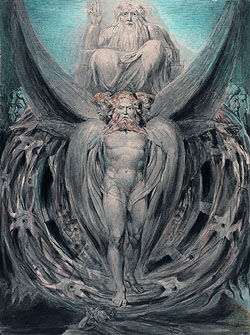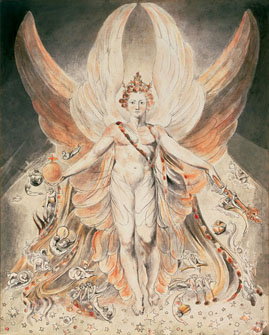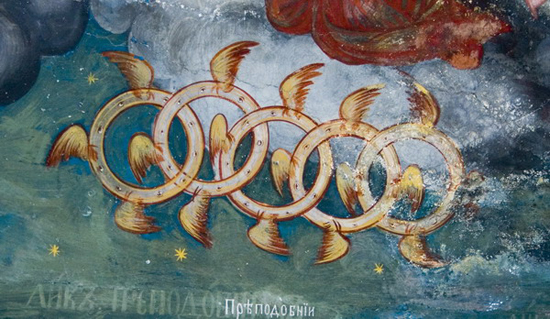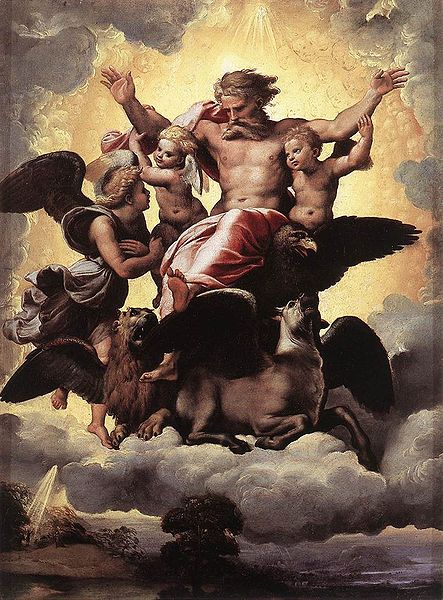Ezekiel
Angels and Wheels over Zion
Is there a sexier book in the Tanakh or Old Testament? Of the Jewish prophets, Ezekiel has long been the one to make people (Jews and Christians) uncomfortable with his sexually explicit references, especially in chapters 16 and 23:
(23) 19 Yet she became more and more promiscuous as she recalled the days of her youth, when she was a prostitute in Egypt. 20 There she lusted after her lovers, whose genitals were like those of donkeys and whose emission was like that of horses. 21 So you longed for the lewdness of your youth, when in Egypt your bosom was caressed and your young breasts fondled.
It's thrilling enough to set off academics condemning its sexism and conservative religious agonizing over it as pornography. It's allegory of course: God had sex with Jerusalem who then went whoring after other gods and that brought down destruction upon her.


William Blake (above) was far more interested in the visionary aspects, as in The Whirlwind: Ezekiel's Vision of the Cherubim and Eyed Wheels (c. 1803-1805) and Satan in his Original Glory: 'Thou wast Perfect till Iniquity was Found in Thee' (c. 1805). Both are derived from The Book of Ezekiel, notably chapters 1, 10 and 28.
The Book of Ezekiel's most bizarre references come at the beginning, with God arriving in a war chariot drawn by four creatures whose faces are those of a man, a lion, an ox and an eagle, and each has four wings. There are many eyes and precious stones and wheels within wheels... This bizarre cluster of images piled atop each other has posed challenges for painters.

Above is the approach taken in a fresco of 1836 in St. John the Baptist Church in Kratovo, Macedonia. The four creatures also pop up again - in Revelation 4 (now with six wings each!). Ever since then Biblical apologists have devised exquisite flights of fancy to explain all this delirious symbolism, as have Jewish scholars.
Below is Raphael's Vision of Ezekiel from 1518, with the four creatures grouped around Jesus-as God (a design also known as a Tetramorph), along with a couple of cherubs. The creatures later would become associated, in early Christian mythology, with the four evangelists - Matthew, Mark, Luke and John.

The Book of Ezekiel (chapter 3) is also the source for the name Tel Aviv. Its founders chose the name in 1910, after a place in Babylonia during the Captivity.
